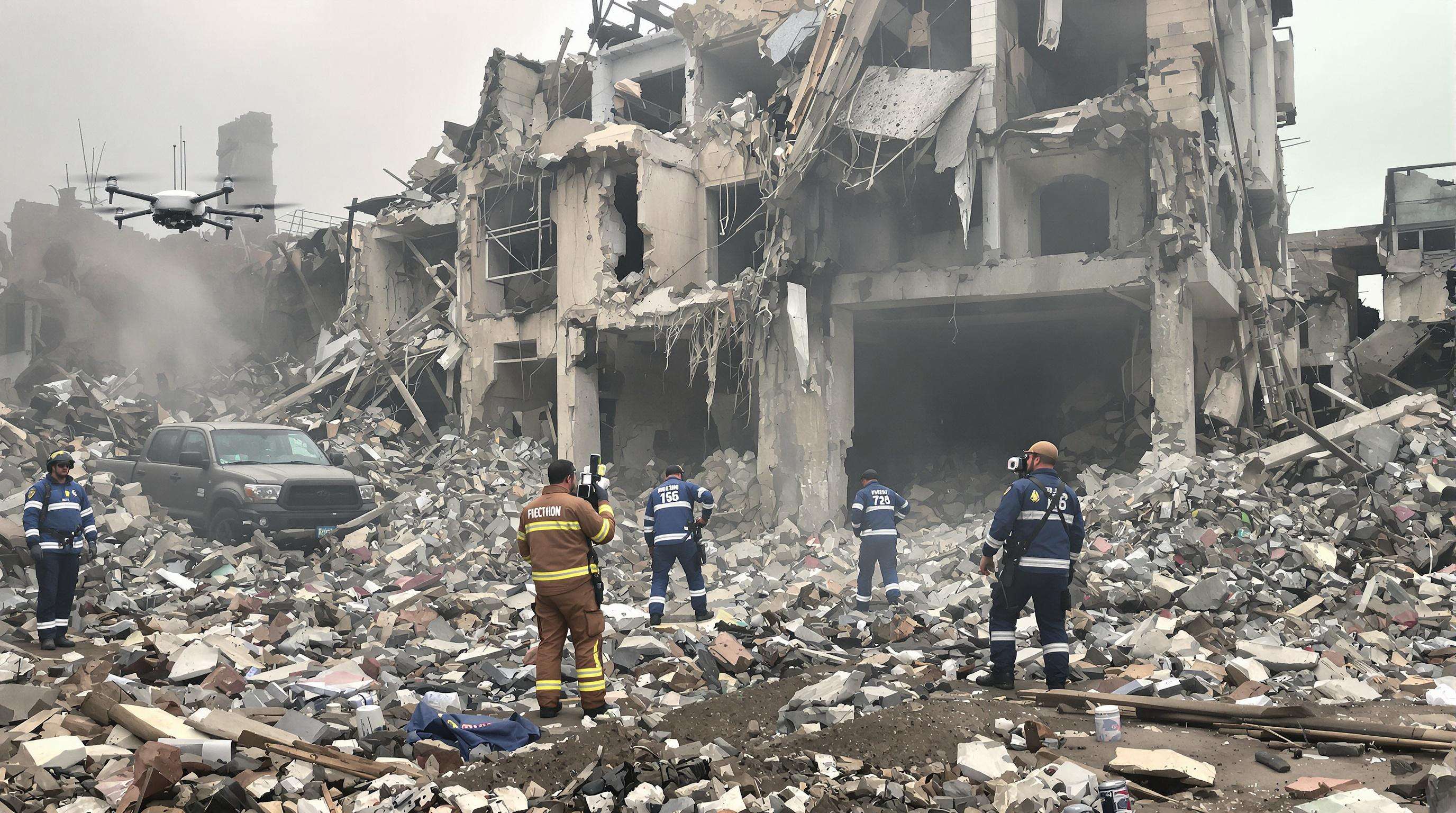What Are Acoustic Hailing Devices (AHDs)?
Purpose Acoustic hailing devices (AHDs) are communications systems that are specifically designed to provide clear voice messages and warning tones to individuals from far (500+ m) away in noisy ambient conditions. Originally created for the military, they're now being used by emergency responders to focus sound waves and slice through the urban din or, worse, the cacophony of natural disaster, to sweep evacuated crowds or even enter large-scale incident-control through building windows.
Core Features That Enable Rapid Emergency Response
AHDs combine critical capabilities:
- High-intensity output (120-150 dB) ensures audibility over extreme noise
- Directional acoustic technology targets specific zones while minimizing noise pollution elsewhere
- Ruggedized designs withstand extreme conditions, meeting military-grade standards for flood zones, wildfires, and collapsed structures
Key Applications in Public Safety and Disaster Management
Emergency managers deploy AHDs for:
- Hurricane evacuations: Overriding ambient noise to direct stranded residents
- Search-and-rescue: Two-way communication with survivors when radio signals fail
- Civil disturbances: Escalating tone warnings before crowd control measures
Recent advancements integrate AHDs with mass notification platforms, creating layered alert systems combining mobile alerts and hyper-localized acoustic messaging.
Overcoming Noise Barriers with Directed Acoustic Messaging

AHDs use beam-forming technology to project intelligible commands through 120+ dB noise (equivalent to a chainsaw). Concentrating sound into a 15-30° beam maintains 85% speech recognition accuracy in riots or hurricane winds (DHS 2023), while reducing interference for non-target areas.
Performance in Extreme Conditions
Field tests show:
- 90%+ word recognition at 500 meters in 35 mph crosswinds
- Military-grade AHDs maintain clarity at 2,000 meters in ice/wind using parametric array technology
Comparative Advantage: AHDs vs. Traditional Systems
| Feature | Traditional Systems | Modern AHDs |
|---|---|---|
| Effective Range | ≤ 150 meters | 500-2,000 meters |
| Message Specificity | General alerts only | Custom voice commands |
| Noise Penetration | 95 dB ambient max | 125 dB ambient capable |
| Deployment Time | 15-30 minutes | < 5 minutes |
AHDs eliminate "alert fatigue" by delivering actionable instructions rather than generic warnings.
Balancing Effectiveness and Community Acceptance
While AHDs output 135-153 dB at source, careful calibration keeps non-target areas below 90 dB (city traffic levels). A 2023 study found 79% public acceptance when devices operated at 30% maximum output during drills.
Enhancing First Responder Safety Through Remote Control
AHDs allow broadcasting from safe distances (300–500 meters) during active shooter scenarios, chemical spills, or collapses. Advanced systems monitor battery life, connectivity, and output, alerting operators to potential failures.
Accelerating Search-and-Rescue Missions

Portable AHDs feature:
- Drone-deliverable units for collapsed structures/flood zones
- 12-hour battery life for temporary communication hubs
- 40% faster search grid clearance when synced with thermal drones/seismic sensors
Integration with Mass Notification and Emergency Alert Systems
Synchronizing AHDs with City-Wide Alert Platforms
Modern AHDs integrate with mass notification systems (MNS) to deliver directional audio alongside text alerts, complying with NFPA 72 (2025) standards. APIs connect them to weather tools/GIS mapping for real-time adjustments.
Case Study: LRAD Networks in Hurricane Evacuation Drills
2023 Gulf Coast drills showed:
- 37% less traffic congestion with directional audio providing specific route instructions
- 92% compliance rate vs. 68% for traditional PA systems
- 8-second alert activation vs. 90 seconds for manual sirens
Future Innovations in Acoustic Hailing Technology
AI-Powered Automation
By 2030, AI-enhanced AHDs will:
- Auto-adjust frequencies based on ambient noise
- Reduce response delays by 27% via automated evacuation instructions
Advancements in Deployment
- 72+ hour operation with graphene batteries/solar charging
- 5 kg drone-deployable units for remote disaster zones
- IoT integration with traffic cameras/air quality sensors for predictive alerts
The global AHD market is expanding at 17.48% CAGR, driven by hybrid urban/rural designs (Globenewswire 2025).
FAQ
What is the primary function of Acoustic Hailing Devices?
Acoustic Hailing Devices are designed to provide clear voice messages and warning tones over long distances in noisy conditions, primarily used for emergency communication.
How do AHDs enhance emergency response?
AHDs enhance emergency response by offering high-intensity sound, directional acoustic technology, and rugged designs to withstand extreme conditions, ensuring effective communication in crises.
What are some key applications of AHDs?
AHDs are used in hurricane evacuations, search-and-rescue missions, and during civil disturbances to provide clear instructions and communication.
Table of Contents
- What Are Acoustic Hailing Devices (AHDs)?
- Core Features That Enable Rapid Emergency Response
- Key Applications in Public Safety and Disaster Management
- Overcoming Noise Barriers with Directed Acoustic Messaging
- Performance in Extreme Conditions
- Comparative Advantage: AHDs vs. Traditional Systems
- Balancing Effectiveness and Community Acceptance
- Enhancing First Responder Safety Through Remote Control
- Accelerating Search-and-Rescue Missions
- Integration with Mass Notification and Emergency Alert Systems
- Synchronizing AHDs with City-Wide Alert Platforms
- Case Study: LRAD Networks in Hurricane Evacuation Drills
- Future Innovations in Acoustic Hailing Technology
- AI-Powered Automation
- Advancements in Deployment
- FAQ

